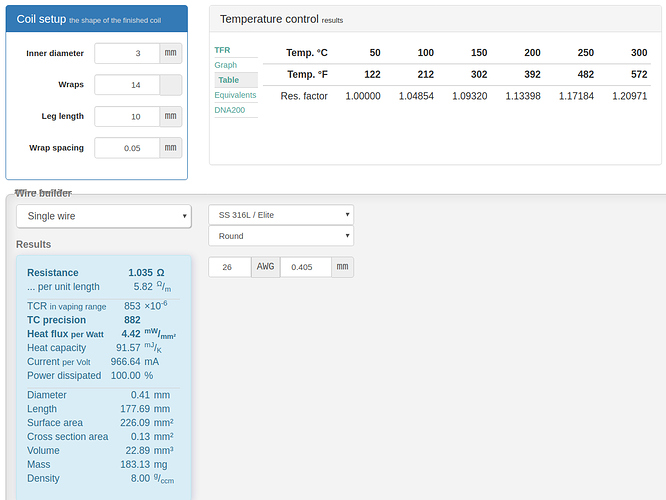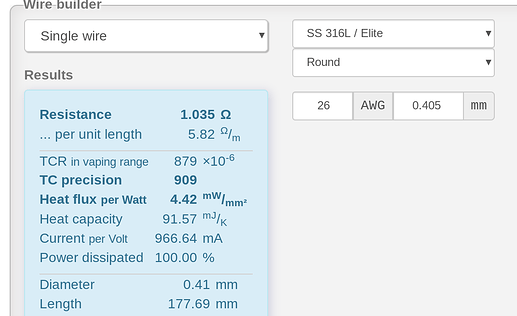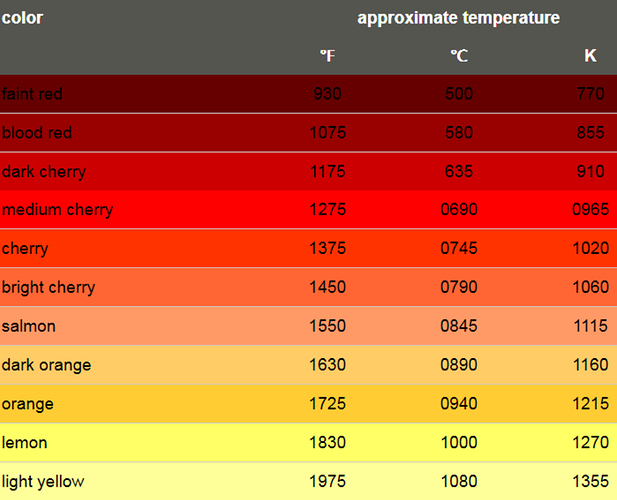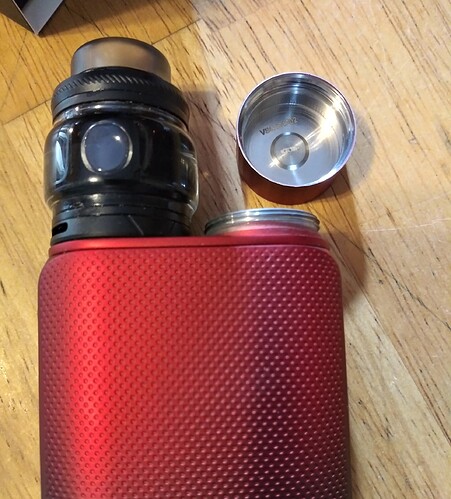Thank you for the review. Not my cuppa tho.
One of my first real mods was an Eleaf Pico. I’ve been a big fan of mini mods ever since. I still have a bit of everything else, all the way up to 4x18650 or dual 21700 mods. It’s kind of a mixed bag at my house. The mods I have most of are probably dual 18650 though.
Yeah it really is a great little mod. I prefer simplistic displays over big touch screens and that stuff.
I received a Vaporesso Swag II around the first of this year (2020) from a pre-order across the Pacific. Chose the Black color - because while I like the Blue and Red colors, they (to my eyes) look like they got left on a heating element and started to burn around the bottom of the case. The Silver color looked like it (might) not looks so good if/when e-juice gets into those tiny indentations on the case. Dunno. Black works well.
The build quality seems really good. It is light as a feather, as compared to my Pico 25s, yet remains well balanced with a 5ML RTA mounted. Impressive in those respects - although a generalized Vaporesso mechanical issue was recently raised by Dan.
The user-controls are well built and functional, and the user-menu scheme is nicely implemented.
Much like with my digital cameras, it’s full of all kinds of “auto-brain” internal (and functionally rather mysterious in nature) control-modes that present (in marketing) as making usage easy for users. Just like I ended up ignoring most all of the trendy “auto-brain” bells and whistles on my cameras - in favor of maximal user-control of the core (photographic) parameters, I went straight to the “DYI” menu on the Swag II, and have to date only used the constant Wattage and constant Temperature mode functions (using SS 316L), ~1.0 Ohm coil, Rayon wick.
The constant Wattage mode has a glorified “preheat”, which helps to get things going (with coil-wick interface temperature) a tad sooner at the low ~5 Watt power level that I use with NETs. No user knowledge or control-ability regarding “preheat” power levels or duration.
The (DYI Menu accessed) constant Temperature mode (set for their pre-canned SS Temperature Coefficient) works better than my Pico 25s (which really FUBAR-up TC, IMO) - but appears to (perhaps) use a “soft” (rather than “abrupt”) “clipping-point”. I find that I don’t really like the scheme - because it makes things begin to seem to “get saggy” in ways that are more annoying than they are satisfying.
Oddly, when “burning” my 3mm diameter single coils between wick-installations, this mod (in either of the above modes) seems unable to (ever) warm the coil to glowing (unlike my Sigeleis and Pico 25s). Strange, indeed. It’s as if there operates some stealth power “governor”. This seems like (secret sauce) “paternalism” that I don’t want or need. Behavior is present in plain old constant Wattage as well as TC.
My final issue - relevant when trying to yield the most usable power from single 18650 cells - is that below ~3.5 VDC (and surely by 3.4 VDC), the ability of the device to do more than “choke and wheeze” crashes rapidly. The Battery Indicator states “50%” at ~3.6 VDC. Once the reading drops below around “40%” (at ~3.5 VDC), it’s basically “all over” for the (useful) battery discharge cycle. This behavior makes a significant difference (for me). My Sigelei 30W Minis and Pico 25s are both usable to 3.3 VDC, and Sigelei 30W Minis can automatically switch to “Bypass” output from PWM output (in order to supplement PWM mode at the “bottom end”) and are able to work down to 3.1 VDC. Useful in a pinch !
One last issue is that while I can actually make-out what is displayed on my Pico 25 display-screens (without reading glasses), this is not the case for the Vaporesso Swag II display-screen. Tiny numbers.
So, after this one Swag II, I decided to (instead) stock-up with an extra (and more adjustable) Pico 25.
Source: https://www.vapourcore.com/user/products/large/swag2m%20blk.jpg
A thorough review, thanks for the info. You’ve got me thinking about it. I’m starting to dig these mini-mights. If it can deliver what you need, the smaller the better.
Looked again at the Swag II when “burning coils” - and need to revise my statements (quoted above).
In constant Wattage mode, I can make my (SS 316L, ~1.0 Ohm, 13-turn of #26, 3mm diameter, 5mm length) coil “glow red” at a 6 Watt setting. This kind of behavior is about the same as my other mods.
However, using the constant Temperature mode, with Power set at the same 6 Watts, I cannot get the same coil to similarly glow - even when the Temp Max is set to 300 C ! Using “traditional” SS Coefficient of “91”. What temperature(s) do you (guestimate) that your (similar coil-mass), SS 316L coils glow at ?
I’m pretty sure it’s 92. That’s what I’ve used for years.
Is there any reliable source where they have graphs or tables with this info per material?
Steam-engine still says 88 and DJLSB says 92…
Funny that even after all these years, there’s still no consensus between various “trusted sources”
If anyone has the proper equipment to test, this is the formula by the way
![]()
Now my brain hurts, guess that’s why I stick to Watt mode🤪

I looked into what is around on SS (316L) Temperature Coefficient. My impression is that the differences between those two sources that you (and others) have noted likely has to do with the Temp Co (a linear slope approx.) being a (decreasing) function of Temperature. Thus, some averaged value might be best.
Listed in Parts per Million (PPM) change in Resistance value, Temps shown are in Degrees C:
Temp Domain ------------------ Temp Coefficient
0-50 --------------------------------------- 1009.8
50-100 ------------------------------------- 970.8
100-150 ----------------------------------- 893.2
150-200 ----------------------------------- 815.6
250-200 ----------------------------------- 757.2
300-250 ----------------------------------- 757.4
If one takes an (arithmetic) average between 0 and 200 *C, the result is = 922.4
If one takes a (geometric) average between 0 and 200 *C, the result is = 919.3
.
If one takes an (arithmetic) average between 0 and 250 *C, the result is = 889.3
If one takes a (geometric) average between 0 and 250 *C, the result is = 884.3
.
If one takes an (arithmetic) average between 50 and 300 *C, the result is = 838.8
If one takes a (geometric) average between 50 and 300 *C, the result is = 834.9
.
If one takes an (arithmetic) average between 100 and 300 *C, the result is = 805.9
If one takes a (geometric) average between 100 and 300 *C, the result is = 804.0
.
Note: Geometric averages listed derived from data from equally-spaced Temp increments (of 50 *C).
Some mods/chipsets will respond differently to a certain TCR number. I’ve done 88 thru 94. I have an old Smoant Battlestar that works best at 150 for TC. Go figure. DNA devices are nice because you can customize between TCR and TFR with a CSV generated by Steam Engine. But overall, at least for me, 92 is the happiest medium.
(For SS 316L), folks seem to improvise (the setting of that numerical constant) all over the place. That constant as applied is just a scale-factor in the feedback-error loop. If one sets the constant higher, then the system assumes that the wire TC itself is higher - and correspondingly reduces its own “loop gain” factor, resulting in a higher sensed coil-wick interface temperature being allowed before the servo-system acts to limit the coil drive Current (and the corresponding coil-Power dissipated, as calculated for the measured coil Resistance value). On my Pico 25 (TC mode), I have to crank that scale-factor value up to values into the several hundreds (in order to avoid the TC limiting kicking-in prematurely). Pico 25 TC is untenable below ~1.0 Ohm load, beginning to become semi-workable around ~1.0 Ohm.
That (Resistance) measurement value is affected by the TC scale-factor setting (as well as offset) - so one should “re-lock” the (room temp) coil-Resistance reference after changing the scale-factor setting.
We’re totally derailing @INOIROC’s review thread so apologies to him.
But Raven…I was looking at the screen cap you posted from Steam and am curious how you got it to display those numbers. I punched in the same variables and it gave me this…
Notice how the “TCR in vaping range” is different?
Dunno on the reason(s) for that difference, TZ. I thought that (perhaps) since I had changed the (web-page default) “temperature points” (in edit-able TFR list), they might be coming up with an (averaged) TC coefficient value based on the range of those (individual temperature) values. However, the value that the web-page returns remains the same (“TC precision = 882”) even when I change those input-values. That remains an interesting mystery. Will update if and when I may suss the reason(s) out.
Since the Vaporesso Swag II review posted covers its TC mode operation (as does my own posted info), I would think that (some) readers (might) find such matters to be of (some) interest to them.
Quora Page content found:
Source: Know Temperature when metal glows red | Hearth.com Forums Home
Note: The above-linked web-page asserts that the relationship is independent of the particular metal.
Whenever I dry burn my coils, I always switch to either ‘Bypass’ or ‘Power’ modes, with max power of 22 watts. Once coil is cleaned, I switch back to TC, SS.
Though I’ve got liquid to be focussing on for a while yet while I try and accumulate as much as possible before October, I found actually go for a little kit like that: reminds me if the iStick Pico that shat itself just the other night.
And that sorta design is excellent as a pocket mod.
Wait, this review’s a fn year old!!
Still, I like that kinda mod after owning the Pico.
I’m thinking of getting one. Besides my original Pico, I also have Geek Vape’s Lucid. I like the Lucid’s battery cap better since it’s female threaded, and doesn’t strip as easily as my Pico’s, which is now being held in place by a…RUBBER BAND! But hey, it still runs!
Does anyone know if the Swag 2’s battery cap is male or female threaded? It’s not a deal breaker, since I want to get one, regardless. Especially more now with the imminent vape mail bans.
Hmmm, or maybe 2 Swag 2’s?!
Take care, be safe, and stay warm!
-Ross





